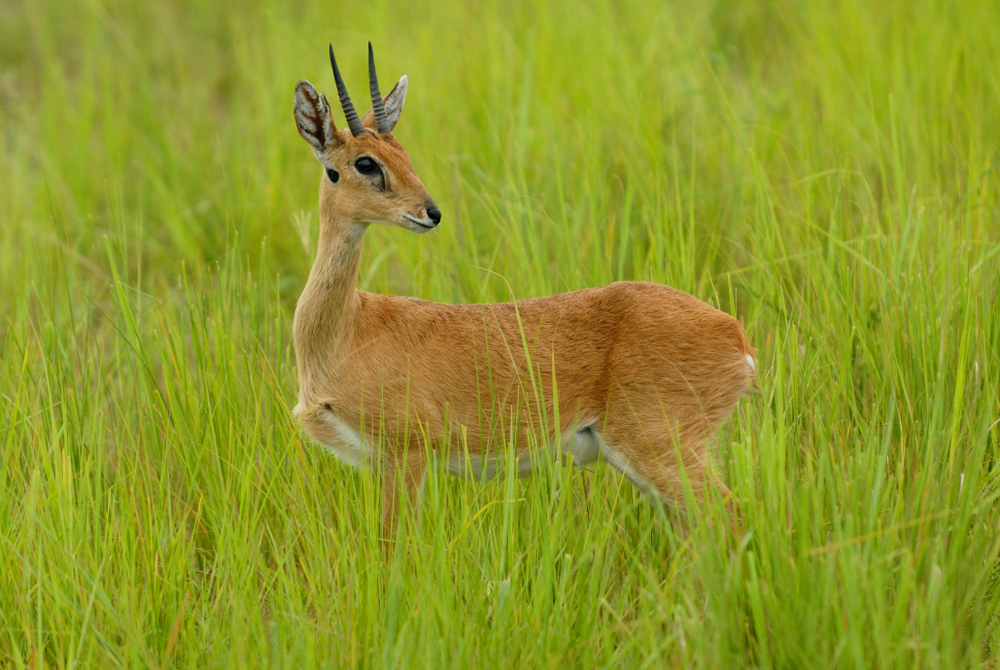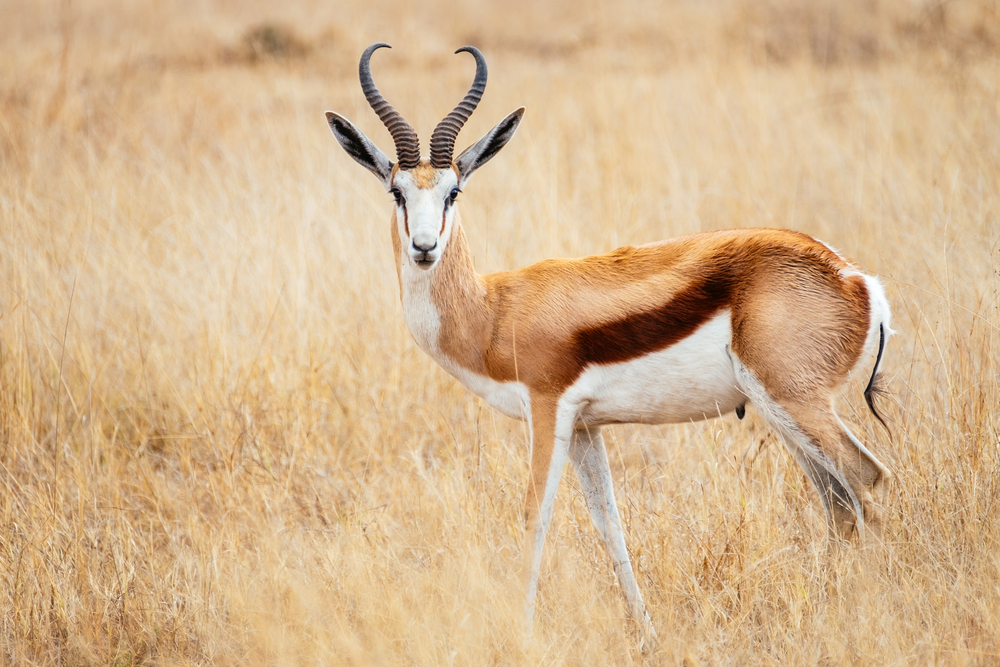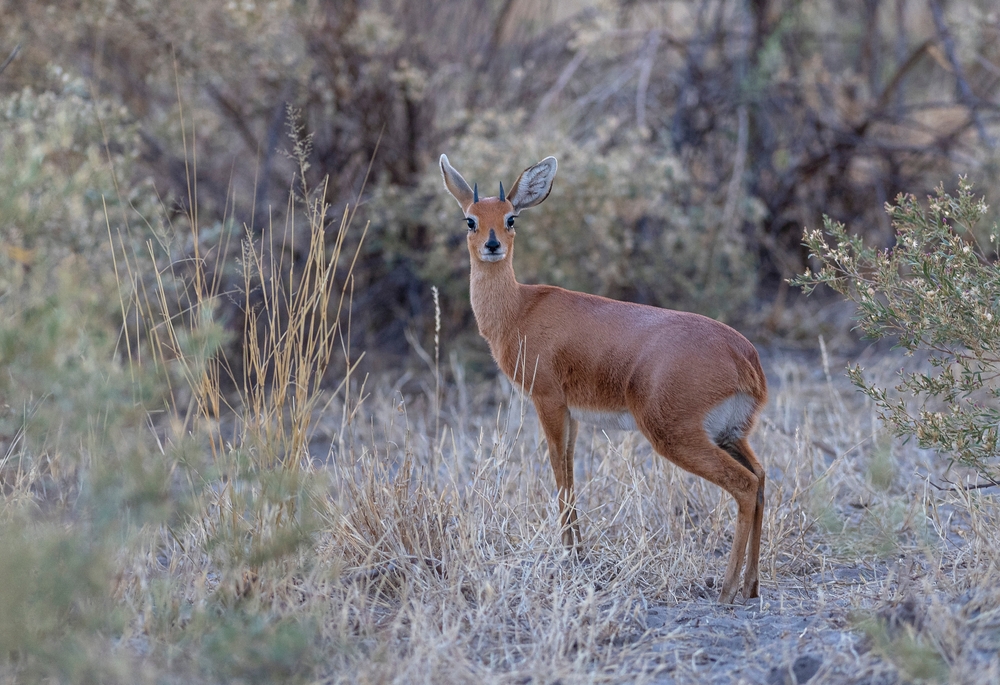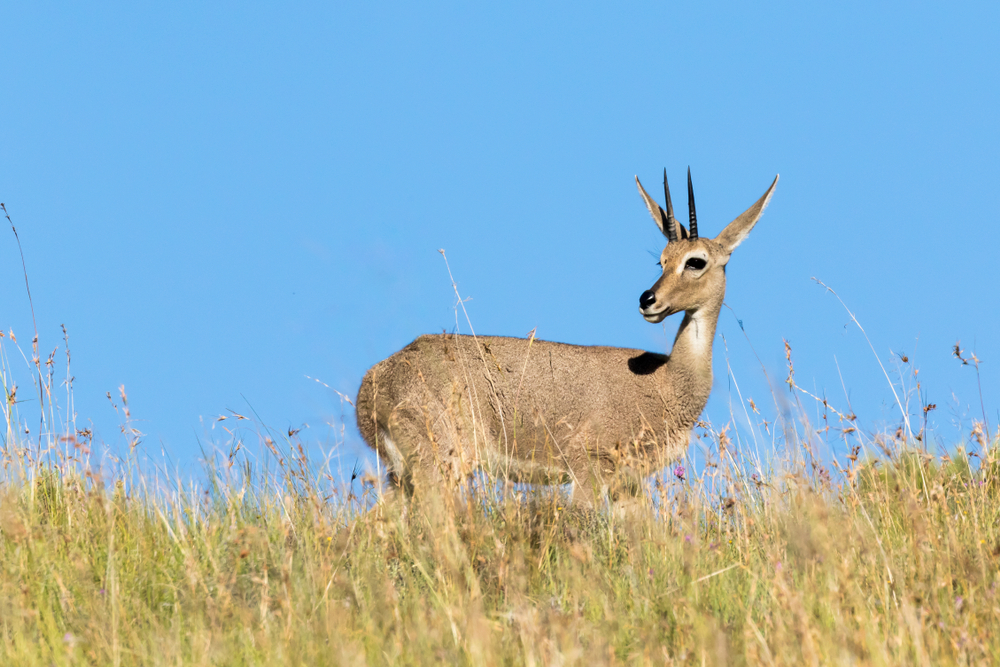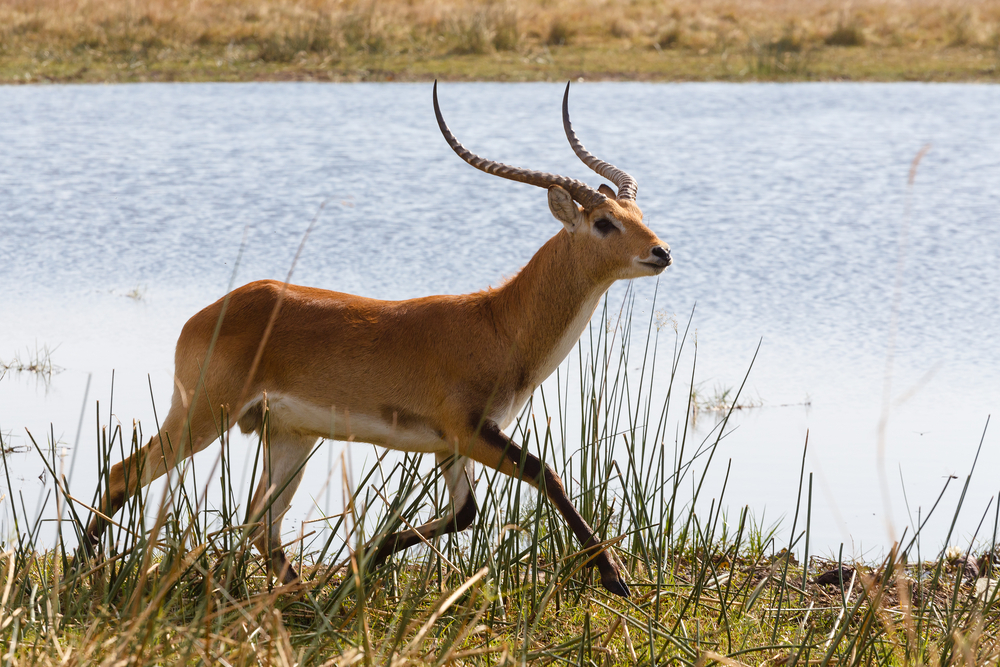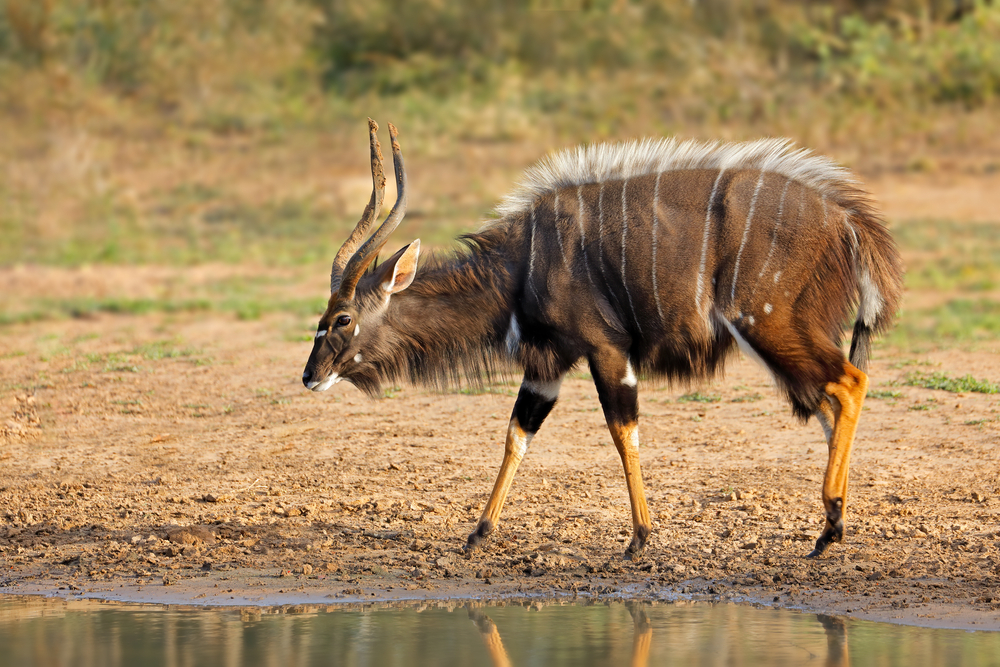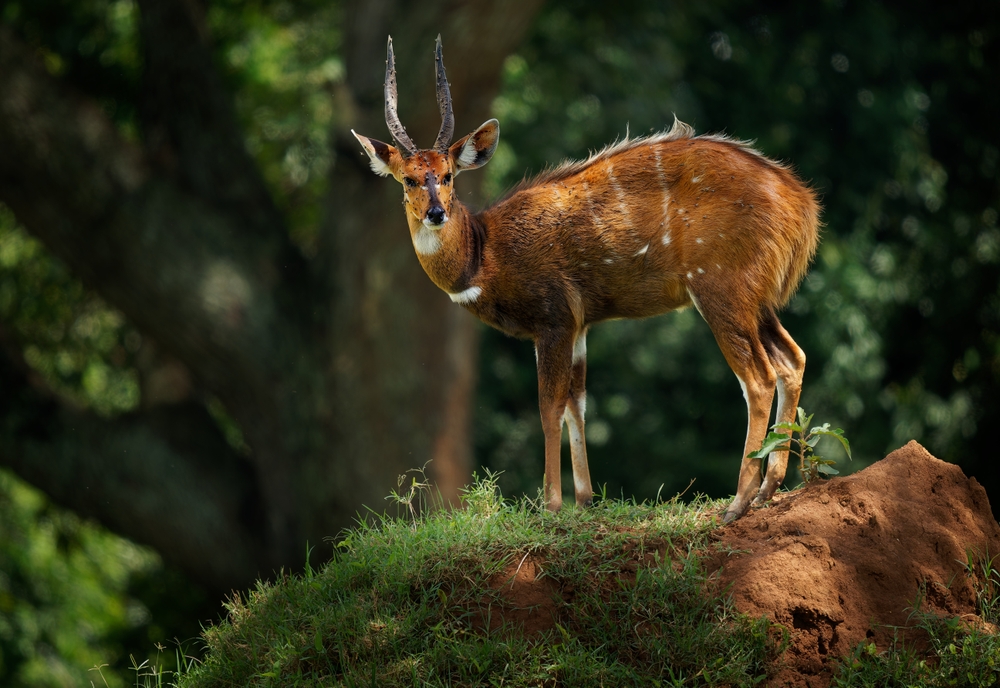Physical Characteristics
The Oribi is a small, graceful antelope known for its delicate build, long limbs, and alert demeanor, making it well-adapted to open grassland habitats. Belonging to the family Bovidae and the genus Ourebia, it is the only species in its genus, emphasizing its unique evolutionary path among African antelopes.
Size and Weight
Oribis are small-bodied animals, with adults standing 50–66 cm (20–26 in) tall at the shoulder. Males are slightly larger than females, weighing between 12–22 kg (26–49 lb), while females tend to fall at the lighter end of the spectrum. Their compact frame and long, slender legs contribute to their speed and agility—important survival traits in their open savanna and grassland environments.
Coloration and Coat
The Oribi sports a soft, short coat that ranges from golden brown to reddish tan on the upper body. Its underparts—including the belly, inner legs, throat, and chin—are starkly white, creating a clean contrast. A characteristic dark patch encircles the base of the tail, and the tail itself is short with a white underside that often flashes when the animal runs, serving as a warning signal to others.
Facial Features and Horns
The face of the Oribi is slender and expressive, with large, dark eyes and ears that are proportionately long, rounded, and mobile, aiding in predator detection. Only males possess horns, which are thin, straight, and sharply pointed, measuring 8–18 cm (3–7 in) in length. The horns are ridged at the base and smooth toward the tip.
Special Adaptations
Oribis have scent glands located below their eyes, which they use for territorial marking. Their hooves are relatively narrow, allowing efficient movement across grassy or lightly wooded terrains. Their keen vision, hearing, and sense of smell help them evade predators such as jackals, servals, and large raptors.



































































